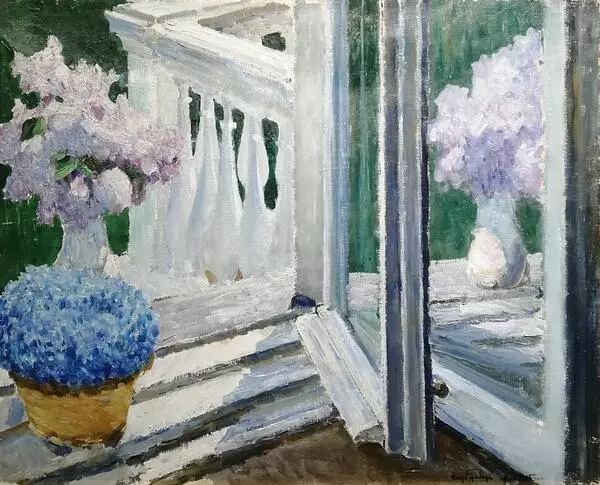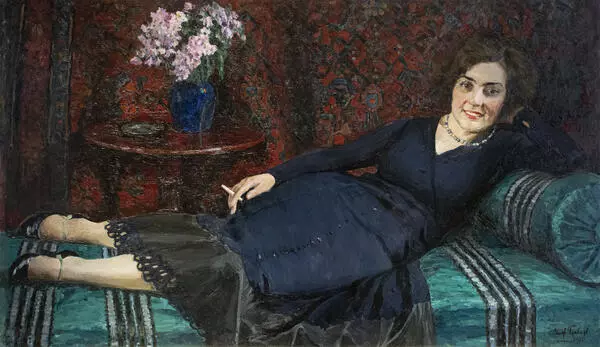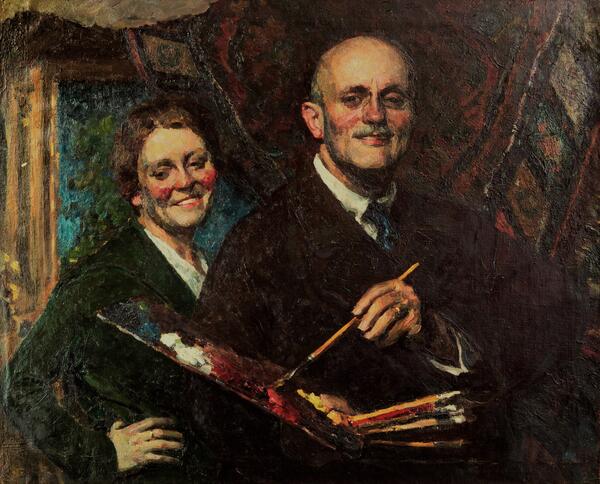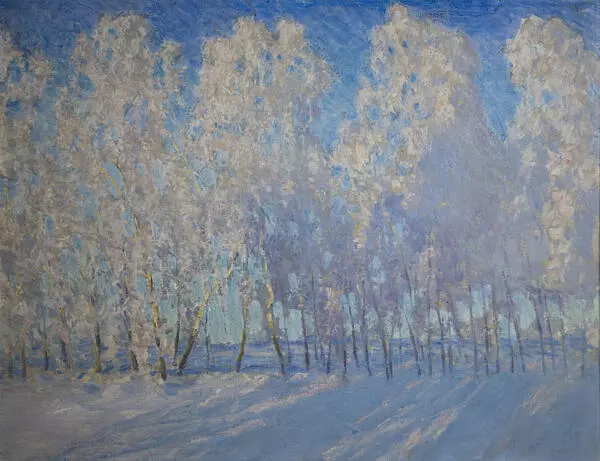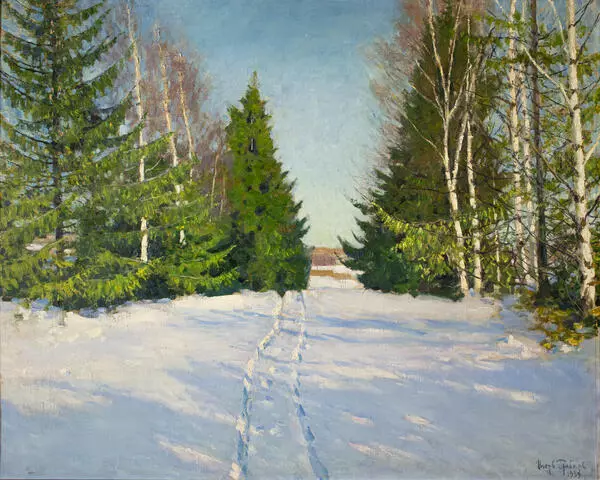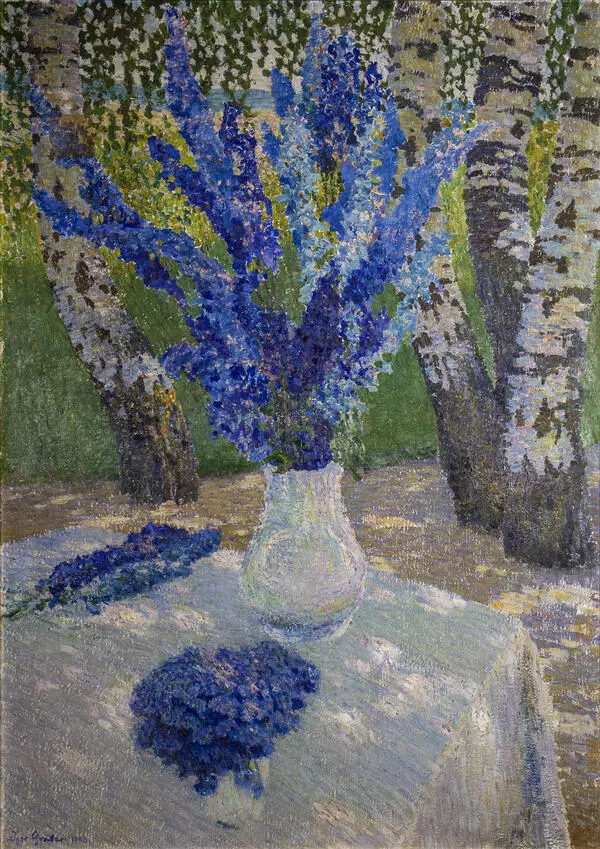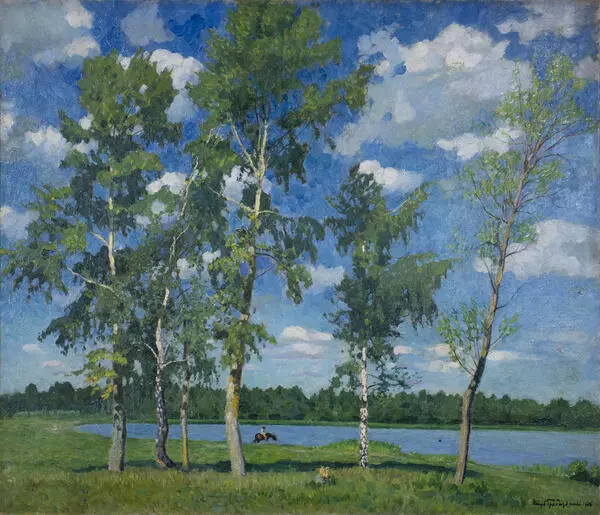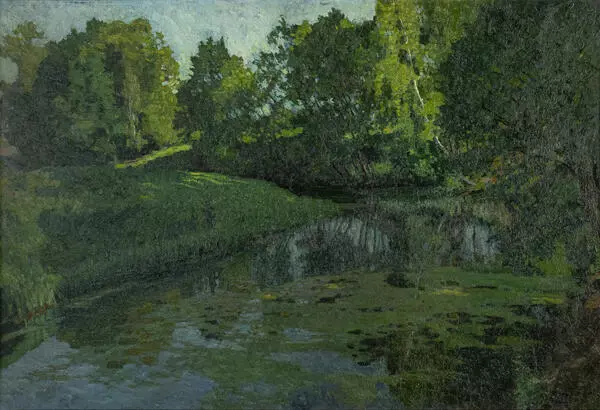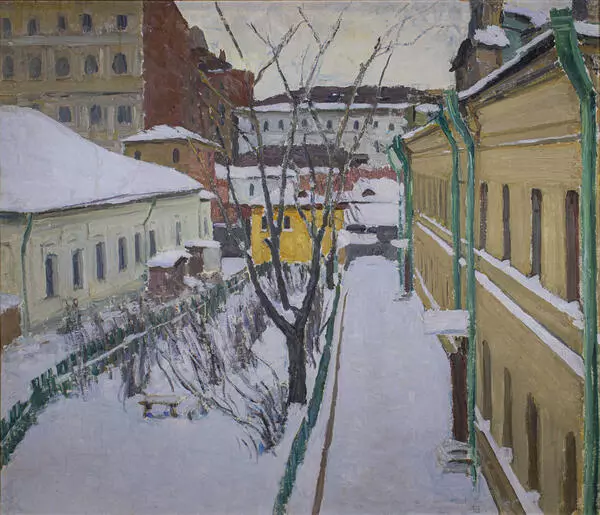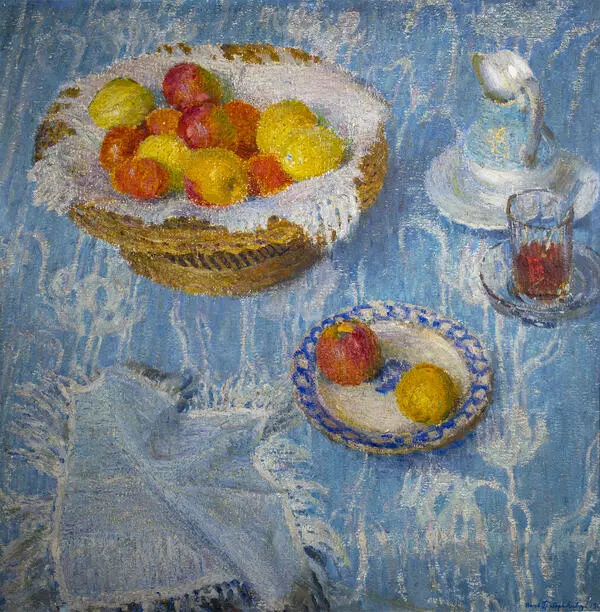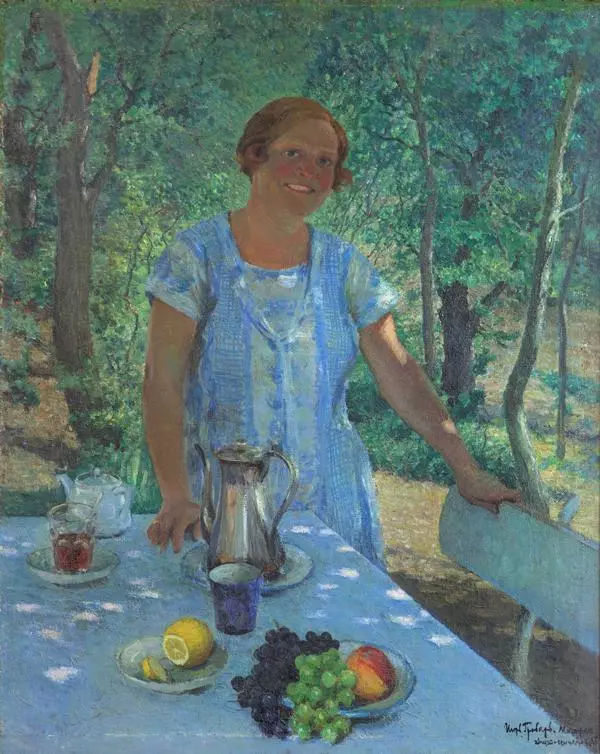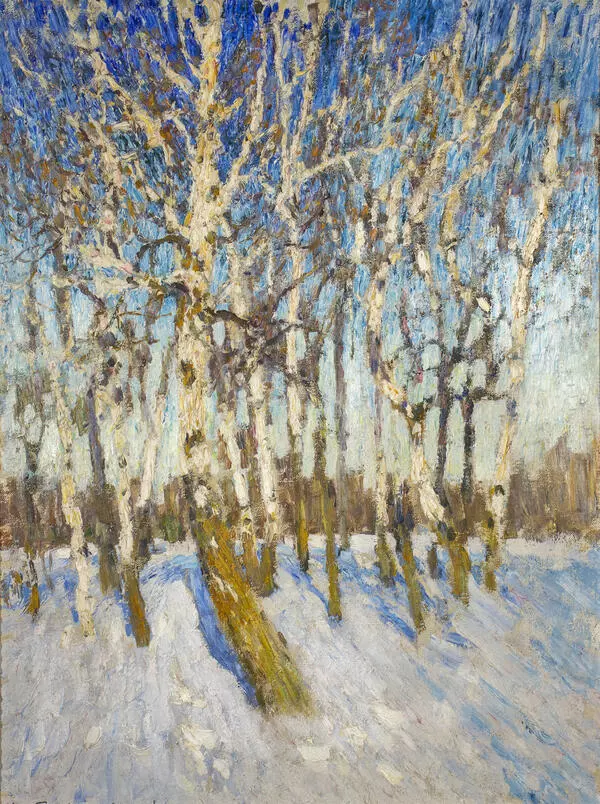The collection of the Sevastopol Art Museum named after Mikhail Pavlovich Kroshitsky houses the painting “Winter Morning” by the famous Russian artist Igor Emmanuilovich Grabar.
The personality of Igor Grabar (1871–1960) is truly universal and unique in the scope of his activity and diversity of gifts: an artist, critic, Russian art historian, public and museum figure. Igor Grabar studied at the St. Petersburg Academy of Arts, then at the school of Anton Ažbe in Munich, but he owed most of all to self-education, to comprehension of artistic mastery in European museums. One of the brightest periods in Grabar’s work was associated with Impressionism. Visiting the Impressionist exhibitions in Paris in the 1890s, he was enchanted by them. Returning to Russia, the artist “rested his heart and soul in the Moscow region”, and from 1904 — in Dugino, where he was invited by the amateur artist Nikolai Vasilyevich Meshcherin, son of the founder of the Danilovskaya textile factory. At the Dugino estate near Moscow, which was located in the village of Meshcherino, the host generously welcomed all painters at his large house.
“Of course, I stuck around [in Dugino] and then stayed there for the second winter, the second, third, fourth, and thirteenth year, turning into one of the oldest Dugino natives. Those thirteen years were the busiest ones in my artistic, as well as literary, architectural activities, and to a large extent, in museum activities,” Igor Grabar later recalled. It was there that the artist found his key landscape theme: he was “mesmerized and swirled away” by Russian winter. That is why the master “passionately wanted… to paint winter, snow, and frost.“
It was in Dugino that the painting “Winter Morning”
displayed in the museum’s exhibition was created. Tall trees rising up to the
full height of the canvas, with their lush, snow-covered crowns, branches, and
shadows weaving in lace patterns, are illuminated by the rays of the sun. The
space of the picture, developing upwards, the fragmentary composition — the
painter’s favorite technique — enable the viewer to see the colorful polyphony
created by short textured strokes, which seems to “argue” with the silence of
the forest that has fallen asleep for the winter.



